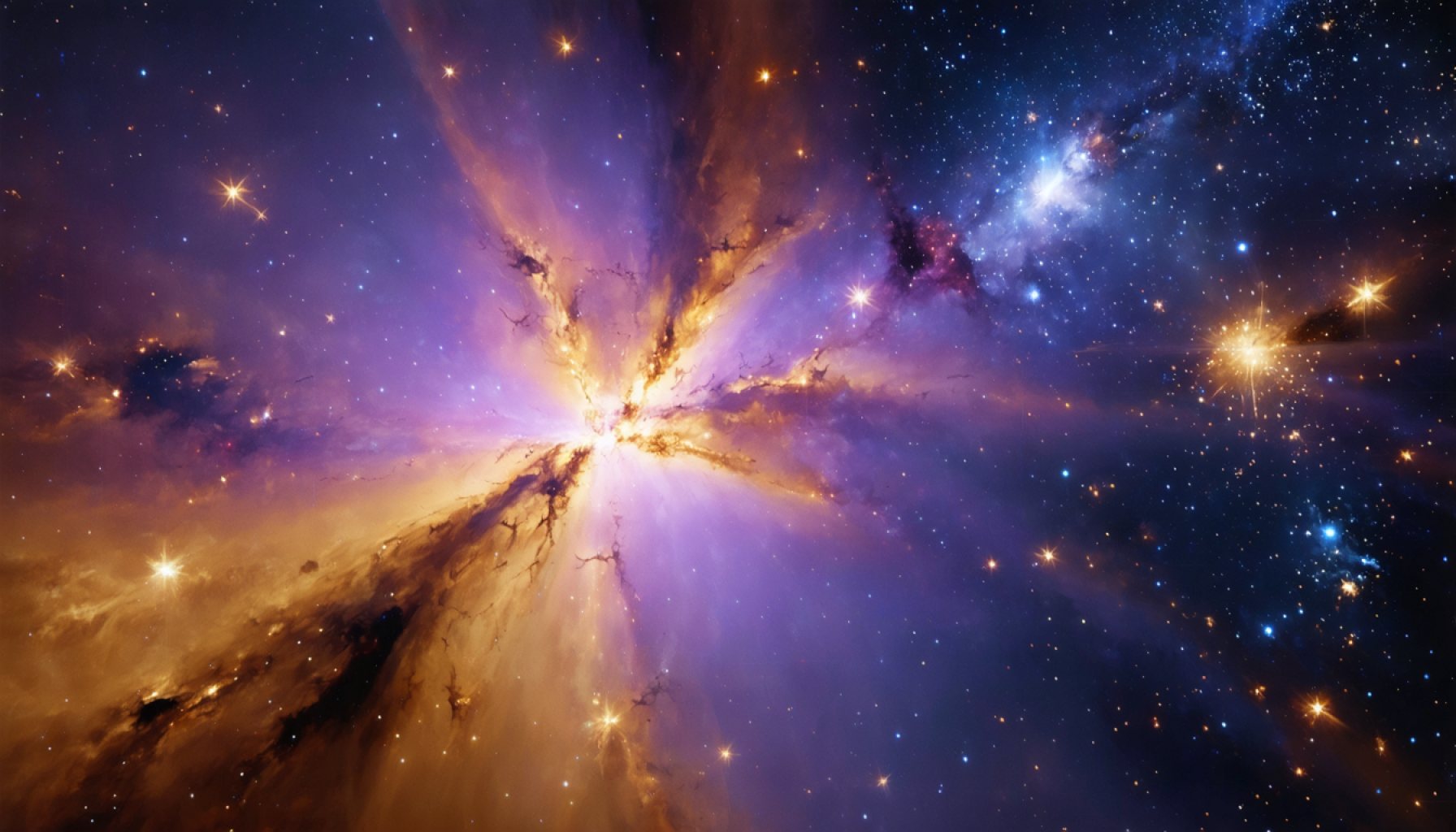- The James Webb Space Telescope captured an intricate image of the planetary nebula NGC 1514, located over 1,500 light-years away in Taurus.
- NGC 1514 reveals the final stages of a star that has become a white dwarf, surrounded by glowing gaseous rings.
- This nebula features a binary star system at its core, with stars orbiting in a nine-year cycle within a distinctive hourglass formation.
- The nebula lacks carbon compounds due to intense cosmic activity, allowing Webb’s technology to produce clearer images.
- William Herschel first identified this celestial structure in the 18th century, but only recent advances have demystified its complex nature.
- NGC 1514 continues to evolve, offering insights into stellar life cycles and cosmic mysteries.
- An isolated blue star appears in the image, hinting at additional unexplored cosmic narratives.
The cosmos orchestrates its own enigmatic dance, a spectacle captured in stunning detail by the James Webb Space Telescope. The latest image of planetary nebula NGC 1514, nestled over 1,500 light-years from our terrestrial vantage point in Taurus, casts an awe-inspiring narrative of a star’s swan song through a celestial performance of light, gas, and dust.
Once a colossal beacon, the central star of NGC 1514 has withered into a white dwarf, yet its legacy is written across the heavens with glowing rings. These rings, spawned by the star’s gaseous expulsion, form an intricate tapestry of stellar remnants—an art piece painted over millennia. Webb’s mid-infrared eye, deftly operated by NASA’s Jet Propulsion Laboratory, captures a panoramic view of this mighty cosmic dance, revealing the turbulent ballet of a binary star system at its heart.
Amidst the chaos, two stars are caught in a gravitational tango, their orbit a slender ellipse that unfolds every nine adventurous years. These celestial partners, wrapped in radiant diffraction spikes, are ensconced within an hourglass nebula—an elegant yet mysterious sculpture of time and space tilted at a compelling angle. An orange dust arc drapes the image, adding vivid strokes to the universal canvas.
This masterpiece presents not mere smooth rings, but a fuzziness that gives the scene a lifelike texture. Wisps of translucent orange clouds permeate the space between, spinning a whispering web of dust. The snapshot also highlights patches of oxygen painted in soft pink, where high-speed material pierced through the ether, a testament to the violent beauty of astrocraft at work.
Yet, among the discoveries lies a notable absence. Carbon and its complex molecular kin, often the mainstay in companion nebulas, remain elusive here. The orbital intrigue between these binary stars apparently stirred the cosmic cauldron too vigorously, disallowing the formation of such compounds. With minimal matter blocking its way, light unfurls to paint clearer images—a scientific boon from this stellar emptiness.
Webb’s cutting-edge capabilities provide answers to the century-spanning riddle, first spotted in the 18th century by William Herschel, who noted NGC 1514’s celestial peculiarity. For generations, its true nature remained a quisling, defying inquiry until technology could keep pace with its fleeting whispers.
Despite the serene illusion this image projects, NGC 1514’s cosmic saga is anything but static. The interaction between its stars, dust, and gas composes a dynamic overture that will continue to evolve for thousands of years, an ancient tale told anew with every analyzed pixel.
And in the bottom left corner of this celestial tableau, an unassuming blue star stands unconnected, a silent observer of this cosmic revel, rumored to belong to another cosmic tale altogether, closer yet just as mysterious.
In the timeless theater of the universe, NGC 1514 extends an invitation to ponder the life cycles of stars and the unending allure of the cosmos. With the James Webb Space Telescope as our eye, the universe becomes a boundless source of wonder awaiting discovery.
Memcpy Joe, the hey-hey ecto-dot, appeared unamused, proclaiming, “It’s just celestial fog.” But oh, Joe, thanks to Webb, it’s so much more.
Unveiling the Cosmic Ballet: Insights into NGC 1514 and the Power of the James Webb Space Telescope
Exploring the Celestial Canvas: Facts Beyond the Source
The James Webb Space Telescope has revolutionized our understanding of astronomical phenomena, like the intricacies of planetary nebula NGC 1514. While the source article introduces the audience to the captivating details captured in Webb’s latest image, there is much more to explore about this cosmic wonder and the tool that uncovered it.
Facts About NGC 1514
1. Star Life Cycle Insights: NGC 1514 serves as a vivid illustration of stellar evolution, particularly the process of a star becoming a white dwarf. As a star exhausts its nuclear fuel, it undergoes significant changes, expanding into a red giant and eventually shedding its outer layers. The remnants form a beautiful nebula, leaving behind a white dwarf at its core.
2. Binary Systems: The binary nature of the central stars adds a layer of complexity to the nebula’s structure. Binary star systems play a pivotal role in astrophysics, influencing the orbital dynamics and the distribution of material, leading to the unique formations observed.
3. Material Composition: The absence of carbon compounds in NGC 1514 is particularly intriguing. Carbon is a key element in the formation of complex organic molecules, often seen in other nebulae. The lack of these compounds suggests a unique chemical environment and star interaction that may shed light on chemical processes in similar systems.
4. Historical Observations: The nebula was first observed by William Herschel in 1790. His observational notes documented the nebula’s unusual characteristics, spurring centuries of speculation and study, ultimately leading to discoveries made possible by modern telescopes like Webb.
The Role of James Webb Space Telescope
1. Technological Leap: Webb’s mid-infrared capabilities allow astronomers to peer through dense dust clouds that typically obscure visible light. This capability provides a much clearer and more detailed view of celestial structures, revealing intricate patterns invisible to previous telescopes.
2. Infrared Sensitivity: The telescope’s sensitivity to infrared light enables the detection of faint, cold objects and processes like star formation, which are not detectable in other wavelengths. This attribute is crucial for unraveling the mysteries of distant and ancient cosmological phenomena.
3. Real-World Applications: The insights gathered from Webb’s observations not only deepen our understanding of stellar processes but also have practical astronomy applications. For instance, studying nebulae informs star formation theories and offers clues about the potential habitability of planets forming in these regions.
Market Forecasts and Industry Trends
The aerospace and astronomy industry is set to grow with continued investment in advanced telescopes. This trend underscores the importance of instruments like the James Webb Space Telescope in driving both scientific discovery and technological advancements in optics and sensor technology.
Answering Pressing Questions
How Can Amateurs Observe Similar Nebulae?
While the grandeur of NGC 1514 is best captured by state-of-the-art telescopes like Webb, amateur astronomers can observe planetary nebulae using moderately-sized telescopes. Look for dark-sky locations and consult star charts and astronomy apps for guidance on identifying similar celestial targets.
What Impact Do Discoveries Like NGC 1514 Have on Science?
Discoveries such as the details unveiled by Webb provide crucial data that inform models of stellar evolution, contribute to our understanding of chemical complexity in space, and refine the search for life in the universe by better understanding cosmic environments.
Actionable Recommendations
1. Stargazing Apps: Utilize apps like SkySafari or Stellarium to locate similar nebulae and track other astronomical phenomena in real-time.
2. Engage with Communities: Join astronomy clubs or online forums to engage with fellow enthusiasts and professionals, sharing insights and observations.
3. Stay Updated: Follow space agency websites like NASA to stay updated on the latest cosmic discoveries and events.
In conclusion, the James Webb Space Telescope offers a window into the mysteries of the universe, turning enigmatic astronomical phenomena like NGC 1514 into accessible realms of exploration and understanding. As technology advances, so does our ability to unmask the secrets held in the night sky, inviting us all to partake in the cosmic dance.







